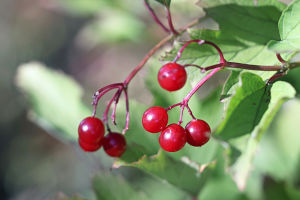Plant Diversity's Vital Role
In nature, the presence of a wide variety of plant species is not just a simple aesthetic feature; it plays a crucial role in maintaining the balance and health of ecosystems.
From the tallest trees to the smallest wildflowers, plant diversity is foundational to ecosystem function, helping to stabilize the environment, support wildlife, and improve human well-being.
But why exactly is plant diversity so vital? Let's explore the many ways in which plant diversity impacts ecosystems and why it's something worth protecting.
Plant Diversity and Ecosystem Stability
One of the most important benefits of plant diversity is its contribution to ecosystem stability. Diverse plant communities are better equipped to withstand environmental stressors such as climate change, pests, and diseases. In ecosystems with fewer plant species, disturbances can have a much larger negative impact.
For instance, monoculture plantations, where a single plant species is grown over large areas, are much more vulnerable to the spread of pests and diseases. On the other hand, diverse plant communities offer a kind of "insurance" against such threats, as different species have varying tolerances to stressors and environmental changes.
The Role of Plants in the Carbon Cycle
Plants play a key role in the global carbon cycle. Through photosynthesis, they absorb carbon dioxide (CO2) from the atmosphere and release oxygen, helping to regulate climate and mitigate the effects of global warming. Plant diversity enhances this function.
A variety of plant species with different growth forms and lifespans allows for more efficient carbon storage. For example, fast-growing plants like grasses absorb carbon quickly, while slow-growing trees store carbon over long periods. This diverse approach to carbon capture helps to create a more balanced and effective carbon sink.
Supporting Wildlife and Biodiversity
Plants are at the base of the food chain in most ecosystems, providing essential resources like food, shelter, and nesting sites for a wide range of animals. The greater the plant diversity, the more types of habitats and food sources are available.
For example, some plants provide nectar for pollinators like bees, butterflies, and birds, while others offer seeds or fruit for herbivores. A diverse plant community attracts a wide variety of animals, from insects to larger mammals, which in turn support a more diverse ecosystem.
Soil Health and Plant Diversity
Healthy soil is another product of plant diversity. Different plant species contribute to soil health in various ways. Some plants have deep roots that help break up compacted soil, while others help to prevent soil erosion by stabilizing the ground with their roots.
Furthermore, diverse plant species can enhance soil nutrient cycling, ensuring that soil remains fertile and capable of supporting new plant life. Plants with different root structures and nutrient requirements support each other, creating a balanced ecosystem that sustains soil health over time.
The Impact on Pollination
Pollination is another area where plant diversity plays a critical role. Many plants depend on insects, birds, and other animals for pollination, which in turn ensures the continuation of plant life. A greater variety of plants offers more sources of pollen and nectar, attracting a greater number of pollinators. Without plant diversity, pollinator populations might decline, leading to lower crop yields and reduced biodiversity in the region.
Resilience Against Climate Change
As climate change accelerates, ecosystems need to adapt quickly to new conditions. Plant diversity allows ecosystems to better cope with changing climates. Different plant species have varying tolerances to temperature, precipitation, and other climatic factors.
When a single species dominates an ecosystem, it is more vulnerable to climate fluctuations. In contrast, a diverse range of plants can adapt to different weather patterns, ensuring the survival of the ecosystem.
Human Benefits of Plant Diversity
It's not just the environment that benefits from plant diversity; humans also gain a lot from it. Many of the world's most important crops, such as wheat, rice, and maize, are threatened by pests, diseases, and climate change. By maintaining plant diversity, we safeguard genetic resources that are essential for crop breeding programs.
Furthermore, plants provide a wealth of medicinal, cultural, and aesthetic benefits to humans. The more plant diversity there is, the more opportunities there are for discovering new medicines, foods, and products that can improve human quality of life.
Conclusion
In conclusion, plant diversity is crucial for the health of ecosystems and the well-being of all living organisms, including humans. Whether it's through enhancing ecosystem stability, supporting wildlife, improving soil health, or aiding in carbon capture, plants are fundamental to maintaining the balance of nature.
The greater the diversity of plants in an ecosystem, the more resilient and sustainable it becomes. Preserving plant diversity should therefore be a priority for environmental conservation efforts, as it is a cornerstone of a healthy, functioning ecosystem.
Contact to : xyjph123@gmail.com
Privacy Agreement
Copyright © boyuanhulian 2020 - 2022. All Right Reserved.
Privacy Agreement
Copyright © boyuanhulian 2020 - 2022. All Right Reserved.


